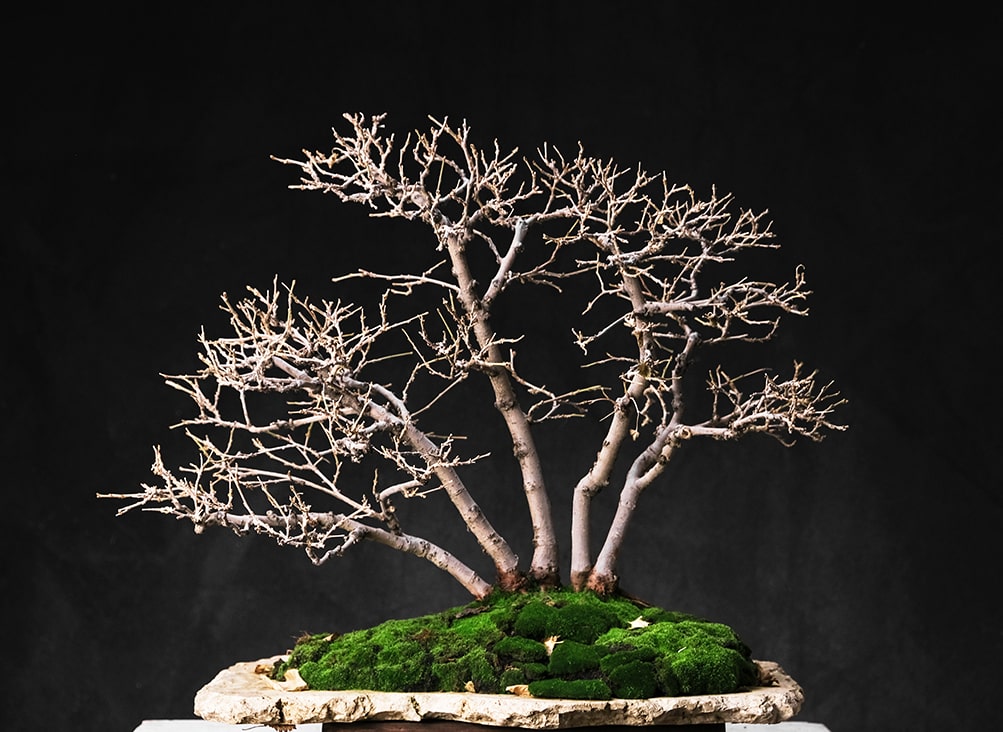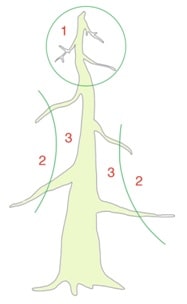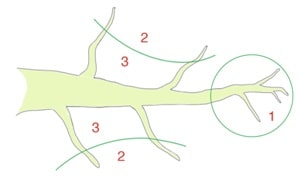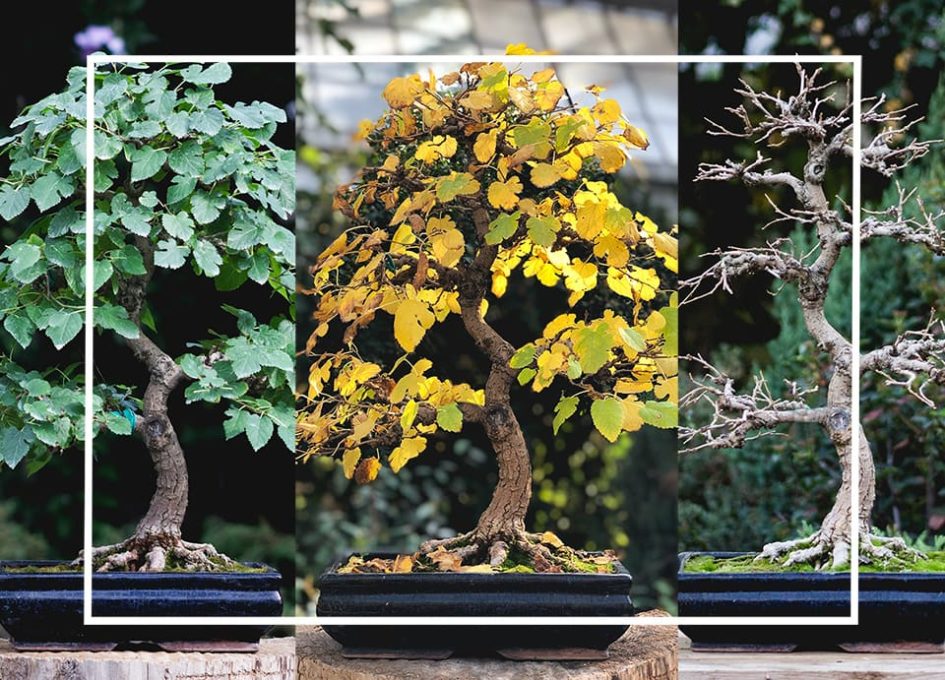After completing the first stage of shaping (removing all unnecessary main and secondary branches, and fixing the branches in the desired position using wire), it is necessary to focus on perfecting the structure and maintaining the miniature size. Shaping and size maintenance pruning is required throughout the entire life of the bonsai.
No seedling will achieve the desired shape with the first pruning and wire framework. It will always turn out that some parts of the bonsai will have branches that are insufficiently dense or a branch will not be the desired length. It is very difficult to determine from the beginning how much time it will take for a given seedling to achieve a "perfect" shape. This depends on the plant's growth characteristics and the experience of the person working with it. Therefore, you will always have to patiently wait for the plant’s development year after year, and act accordingly to achieve the desired result.

One of the most important elements of plant growth is that some parts of the plant dominate the growth process and develop better. In nature, the plant spends little energy on developing the inner branches of the canopy, focusing its main resources on height and width growth. For bonsai, however, we need uniform development and the maintenance of the desired shape of the canopy. Therefore, if we do not limit dominance in certain areas of the plant's growth, the desired proportions, size, and shape will soon be violated.


It is impossible to resolve the problem with just one or two prunings. After some time, new growth will appear in certain parts of the tree, and pruning will need to be repeated.
Here's the translation with the HTML code preserved:
First, attention should be paid to the buds. The buds that are unnecessary for the bonsai and start growing in the spring should be removed. There is no need for the plant to waste energy on unnecessary bud development.
You should choose a method for which branch should be cut, depending on its position on the tree. Special attention should be given to areas with dominant growth. New shoots at the upper and outer areas grow significantly faster and form noticeably larger new shoots. If you notice that such shoots interfere with your plan, cut them completely. To slow down the growth rate, allow 4-5 leaves on such shoots to develop, and only then trim them to 1 or 2 leaves.
At this time, the shoot temporarily stops growing. This allows us to stop growth in dominant areas and create equal development conditions for the inner and lower branches. Branches located on the inner side of the plant should be given more opportunity to develop, allowing them to grow until the weak shoot reaches a certain length and strengthens slightly. Only then should it be trimmed to 3-4 leaves. After such pruning, the distance between nodes significantly reduces. Newly grown shoots have relatively smaller leaves, and the tree's canopy becomes denser. After years of pruning using this method, the plant’s free growth is significantly limited, and the bonsai takes

